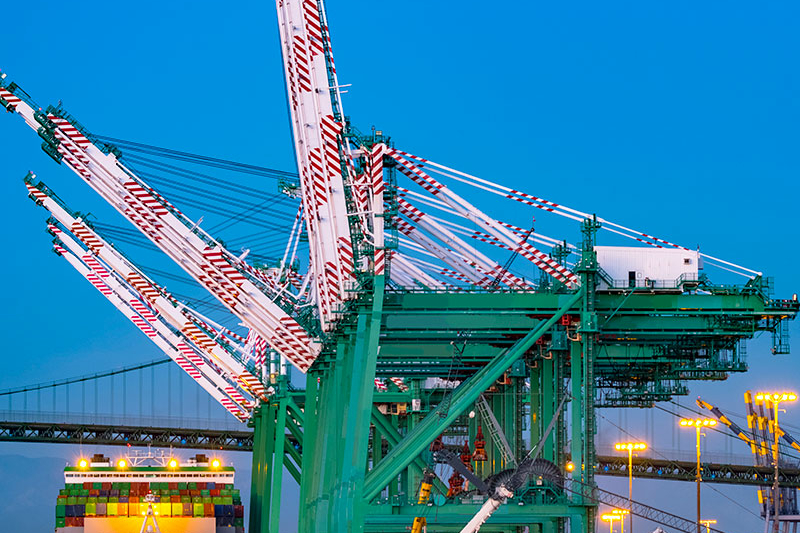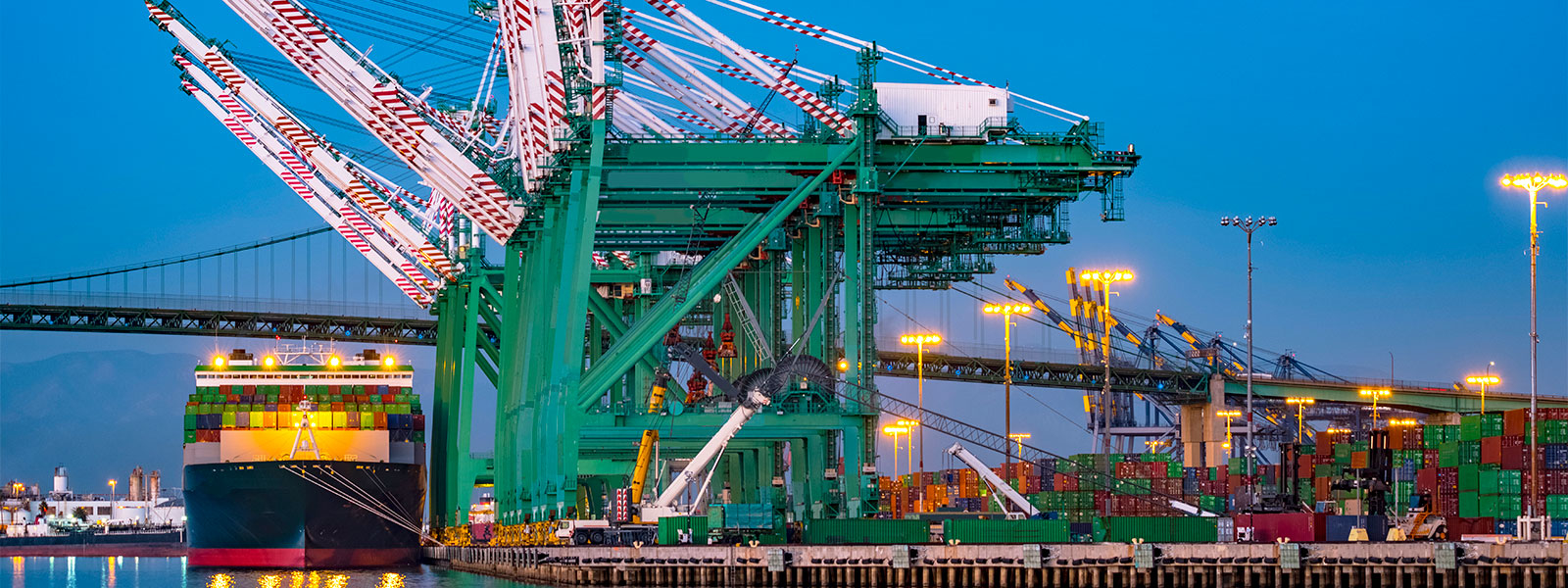Taiwanese businesses and investors must weigh foreign direct investment considerations
While most FDI regimes encourage foreign investment, the growing number and greater sophistication of regimes can add to transaction uncertainty.

After withstanding the impact of COVID-19 in 2020, 2021 witnessed a sharp rebound globally across capital markets, private equity, finance and other corporate deal-making. The rebound was expected—the combination of the pressure to deploy significant amounts of raised capital and pandemic-driven asset value distortion presented attractive value propositions for many stakeholders. The magnitude of the rebound, however, was unexpected.
The exuberance carried over into early 2021, but when the Ukraine conflict started in February 2022, it exacerbated ongoing geopolitical fractures and economic decoupling, quickly dampening any optimism for sustained deal-making in 2022. The security of energy, food and other commodities became a key risk theme in 2022.
However, volatility is not necessarily a bad thing. With careful planning (many steps ahead) on how to manage the current volatility, we believe investors and businesses in Taiwan will be in a prime position to capitalize on Taiwan's critical role in global trade once normalcy resumes.
Following our 2022 Taiwan webinar series in September and October, we hope this year's report for Taiwanese businesses and investors provides helpful guidance during a volatile time.
We begin with an overview of the current state of affairs related to global regulatory developments in foreign direct investment (FDI). Various black swan events in 2022 drove, and will continue to drive, geopolitical fractures and economic decoupling globally. In addition, global FDI regulatory regimes have rapidly matured to the point where it is critical for Taiwanese investors and businesses to ensure maximum deal certainty by considering FDI analysis as probably the most important task they need to manage before embarking on any cross-border investments relating or peripheral to critical infrastructure and technologies.
We then summarize recent European Union court judgments that established what is deemed anti-competitive behavior in the context of exclusivity rebates. Taiwanese businesses trading in dominant positions in the EU should carefully weigh the impact of these judgments on trading practices.
Next, we provide our thoughts on the trends and headwinds in M&A and corporate transactions relating primarily to Taiwan and the rest of the Asia-Pacific region. We hope the thematic investment developments, changing jurisdictional focus and the excess liquidity data points flagged in the overview will help guide investors and businesses in their quest for low-beta high-alpha investments.
To underscore emerging thematic investment developments and value discovery in Taiwan and globally, this year we introduced a webinar session focusing on ESG. This is a rapidly evolving theme which, given its growing importance in the capital markets, financing and corporate transactions, is driving increasing regulatory regimes globally. Because of differing ESG compliance standards globally, investors and Taiwanese businesses should carefully consider the complexities in structuring a compliant and bankable ESG-focused transaction.
This year, we also introduced a webinar session focusing on fund formation. In our report, we summarize the concept of a continuation fund, a fund product that may be of interest amid volatility, and which has affected fund exits.
And finally, we summarize the state of affairs in global sanctions. The CHIPS and Science Act, which came into force in August 2022, is particularly relevant to Taiwan semiconductor companies. Given Taiwan's dominant position in the global semiconductor industry, this legislation has significant impact on the industry's supply chain and economics.
We look forward to discussing these and other issues with you.
While most FDI regimes encourage foreign investment, the growing number and greater sophistication of regimes can add to transaction uncertainty.

Key 2022 judgments apply a five-factor analysis outlined by the EU's highest court in 2017.

How Taiwanese and other firms have weathered 2021’s perfect storm and its aftermath.

As stakeholders embrace ESG considerations, risks, opportunities and challenges to integration remain

These funds create opportunities, but can present legal and business challenges.

Understanding the recent ban of certain chips to China and the new semiconductor-related export controls


Understanding the recent ban of certain chips to China and the new semiconductor-related export controls
Following in the footsteps of its predecessor administration, the Biden administration has continued to pursue forceful policies to restrict China's military and technological capabilities and to secure US primacy in advanced technologies. China, meanwhile, has continued to develop its sanctions and export control legal regime, and remains in the early enforcement stages of laws and regulations intended to counteract the impact of US trade policies.
In late August 2022, media outlets reported that the Commerce Department's Bureau of Industry and Security (BIS) informed certain US manufacturers of chips and chip-making tools they could no longer export to China without a license.1 Nvidia, the world's largest maker of artificial intelligence chips, noted in an SEC filing that the US government had imposed a new license requirement, effective immediately, for any future export to China (including Hong Kong) and Russia of certain of the company's chips and systems that incorporate the chips.2 The company stated that a license is also required to export technology to support or develop the covered products. Similarly, Advanced Micro Devices Inc. (AMD) reported it had received new license requirements to export its MI250 chip to China. According to Nvidia's regulatory filing, the US government indicated that the new license requirement would address the risk that the covered products may be used in, or diverted to, a "military end-use" or "military end-user" in China and Russia.
Building on these "is informed" chip bans, on October 7, 2022, BIS published an interim final rule that implemented expansive new controls on exports, re-exports and transfers (in-country) of certain semiconductor-related items. The rule added new entries to the Commerce Control List (CCL) on advanced computing integrated circuits (ICs), computer commodities that contain such ICs, and certain semiconductor manufacturing equipment and associated software and technology to China.3 The rule also expanded US jurisdiction over certain foreign-made items if they are the direct products of specified US technology or software and are intended for use in advanced computing or "supercomputers" located in or destined to China. Likewise, the rule expands controls on transactions involving items for supercomputer and semiconductor manufacturing end-uses located in China or destined to China and expands the scope of the Entity List Foreign Direct Product Rule for certain entities already on the list. Finally, the new rule adds additional restrictions on specific activities of US persons related to shipping, transmitting, transferring or servicing certain items not subject to US export controls and related to the development and production of advanced ICs and semiconductor manufacturing in China.
BIS issued an interim final rule establishing new export controls on four technologies that met the criteria for emerging and foundational technologies under Section 1758 of the Export Control Reform Act (ECRA) and that were identified as essential to US national security.4 These changes reflect certain controls decided by 42 member states participating in the Wassenaar Arrangement on Export Controls for Conventional Arms and Dual-Use Goods and Technologies (WA) at the December 2021 WA Plenary meeting. The four technologies covered by the rule include two substrates of ultra-wide bandgap semiconductors: Gallium Oxide (Ga2O3), and diamond; electronic computer-aided design (ECAD) software specially designed for the development of integrated circuits with gate-all-around field-effect transistor (GAAFET) structures; and pressure gain combustion (PGC) technology.
Upon entry into force on June 21, 2022, the Uyghur Forced Labor Prevention Act (UFLPA) established a rebuttable presumption that goods produced wholly or in part in the Xinjiang Uyghur Autonomous Region (XUAR) of China or by certain entities affiliated with the XUAR, are made with forced labor and therefore subject to an import prohibition into the US.5 To rebut the presumption, UFLPA establishes a high burden of proof for importers that requires a showing of "clear and convincing evidence" that such goods were not produced with forced labor.6 An importer would also be required to provide information and take actions to demonstrate that the importer's compliance program has implemented measures identified in a US interagency Forced Labor Enforcement Task Force (FLETF) strategy, and that the importer has responded fully to US Customs and Border Protection (CBP)'s related requests for information.
Importantly, the UFLPA contains no de minimis exception, which means that if any part of a product is produced in the XUAR or by identified entities, the final product is subject to the rebuttable presumption, regardless of the product's country of origin for purposes of duties, or the country from which it was imported. The US government has identified the following products as high priority for UFLPA enforcement: silica-based products (including polysilicon and other downstream products); cotton and cotton products; apparel; and tomatoes and downstream products. FLETF chairman, Robert Silvers, recently described forced labor as a "top-tier compliance issue" that boards and management need to be focused on, and as an issue that compliance teams need to be "laser-focused on." He stated that CBP is "strongly enforcing" the UFLPA with "significant resources" and, referring to the priority products designated for enforcement, emphasized that CBP is "looking closely at any other product category where forced labor may come into play…."7
On August 9, 2022, President Biden signed the CHIPS and Science Act, which seeks to bolster the US semiconductor supply chain and promote research and development of advanced technologies in the US.8 The bill includes, in relevant part, new "clawback" provisions that generally prohibit beneficiaries of the CHIPS funding and investment tax credit from expanding semiconductor manufacturing in China for a period of ten years (except for manufacturing of legacy chips). For recipients of CHIPS funding, these provisions establish a process of mandatory notification of planned relevant transactions in China, agency review of such transactions, and mitigation authorities, resembling the CFIUS process and recent legislative proposals for outbound investment screening.
BIS issued an interim final rule on September 8, 2022, revising the Export Administration Regulations (EAR) to authorize the release of certain technology and software in the context of standards-setting and development within standards organizations.9 The changes address concerns regarding whether BIS licenses are required to release low-level technology for legitimate standards activities to parties on the Entity List. As a result of the rule, certain technology and software subject to the EAR and designated as EAR99, or controlled on the Commerce Control List (CCL) only for anti-terrorism (AT) reasons, may be released to members of a standards organization, including Huawei and other Entity List entities, without a license, if released for the purpose of contributing to the revision or development of a standard.
The US has imposed a variety of sanctions on Russia. These include the imposition of comprehensive sanctions embargoes on certain territories, financial services-related restrictions, energy-related restrictions, export control restrictions and aviation restrictions.
The Russia-related comprehensive sanctions embargoes prohibit the exportation or importation of goods, services or technology to or from Crimea as well as the so-called Donetsk People's Republic and Luhansk People's Republic regions of Ukraine.10 Financial restrictions on Russia include a prohibition on all new investment in Russia;11 a prohibition on certain accounting, trust and corporate formation, and management consulting services;12 restrictions on the opening or maintaining of US-dollar correspondent and payable-through accounts for or on behalf of certain foreign financial institutions;13 restrictions on dealings in Russian sovereign debt;14 restrictions on dealings with certain Russian government entities, including the Central Bank of the Russian Federation, the National Wealth Fund of the Russian Federation and the Ministry of Finance of the Russian Federation;15 prohibitions on all transactions with certain designated individuals and entities; and restrictions on dealings in certain new debt or new equity of listed persons.16
The US has also prohibited the importation into the US of Russian oil, gas and coal,17 new investment in Russian energy projects,18 and certain transactions involving arctic offshore, deepwater or shale oil projects.19 Beginning in December 2022, the US is also expected to prohibit certain services in connection with oil purchased above a specified price cap.
Further, the US government has imposed export license requirements for nearly all "dual-use" items intended for Russia, many items intended for use in Russian oil & gas projects, and many luxury items intended for Russia or certain Russian persons.20 The US has also rendered non-US-origin items subject to US export control jurisdiction and imposed export licensing requirements on such items if they (1) contain greater than a de minimis amount of US-origin-controlled content or (2) are made with certain US-origin software or technology.
Lastly, the aviation measures prohibit aircraft owned, chartered, leased, operated or controlled by, for or for the benefit of, a person who is a Russian citizen, from operating to, from, within or through US airspace; and exclude any aircraft registered in, owned or controlled by, or chartered or leased by Russia or a Russian national from using the aviation-related License Exception. In addition, the EAR prohibits nearly all services and actions in connection with aircraft exported in violation of US export controls, resulting in BIS identifying such aircraft, where possible, on a new "Aircraft in Violation" List. BIS has also imposed temporary denial orders on Russian airlines that are believed to be in violation of US export controls.21
Mainland China has implemented its own trade control measures since 2021.22
In January 2021, mainland China issued blocking statute "Rules on Counteracting Unjustified Extra-Territorial Application of Foreign Legislation and Other Measures," which provides a legal framework for the mainland Chinese government to counter laws and regulations from other countries deemed to affect mainland China's interests. For example, the statute requires mainland Chinese companies to report any trade restrictions or sanctions, creating a system that informs the mainland Chinese government about new economic regulations as soon as possible. In addition, the statute contains a provision stipulating that companies may be prohibited from complying with non-Chinese trade restrictions and may be subject to lawsuits if they do comply with these restrictions. Mainland China followed up on this statute with a June 2021 Anti-Foreign Sanctions Law that included provisions allowing the deportation of certain individuals doing business in mainland China as well as other countersanctions, such as visa restrictions, and asset and transaction blocks within mainland China, against individuals and entities who "have directly or indirectly participated in the formulation, decision-making, or implementation of discriminatory restrictive measures.23 It is reported that sanctions measures have already been imposed on a number of companies and individuals under the Anti-Foreign Sanctions Law.
On the export control front, mainland China's Export Control Law, effective from December 1, 2020, has established a uniform framework of export control measures, including an exporter pre-registration system, controlled items lists, licensing regime and requirements on companies' internal compliance programs. On April 28, 2021, mainland China issued the Guiding Opinions on Establishing Internal Compliance Programs for Export Control by Exporters of Dual-Use Items, which provides guidance for establishing internal control compliance programs for companies with operations in China. Further, in April 2022, mainland China issued the draft Regulations on Export Control of Dual-Use Items (Draft for Comment), which are considered the implanting rules for the Export Control Law.
The Cybersecurity Law,24 Personal Information Protection Law,25 and Data Security Law26 of the People's Republic of China have established the legal regime for data protection and data security in mainland China. Both the Data Security Law and the Personal Information Protection Law state that China may take countermeasures against any country or region that adopts prohibitive, restrictive or other similar discriminatory measures against mainland China regarding trade and other fields related to data development and personal information protection. Relatedly, the Data Security Law and the Personal Information Protection Law impose restrictions on cross-border data transfer, especially on providing data located in mainland China to foreign judicial and enforcement authorities.
Due to the foregoing regulatory changes, businesses involved in US-Sino trade should continue to maintain a cautious approach, taking the following steps:
Global and regional businesses should take all of these steps, while carefully considering their risk profiles and how best to balance the competing US-Sino trade restrictions well in advance of undertaking any transactions that could create costly future dilemmas.
1 See https://www.nytimes.com/2022/08/31/technology/gpu-chips-china-russia.html; https://www.reuters.com/technology/nvidia-says-us-has-imposed-new-license-requirement-future-exports-china-2022-08-31/.
2 See https://www.sec.gov/ix?doc=/Archives/edgar/data/1045810/000104581022000146/nvda-20220826.htm.
3 See https://www.federalregister.gov/documents/2022/10/13/2022-21658/implementation-of-additional-export-controls-certain-advanced-computing-and-semiconductor.
4 See https://www.bis.doc.gov/index.php/documents/about-bis/newsroom/press-releases/3116-2022-08-12-bis-press-release-wa-2021-1758-technologies-controls-rule/file.
5 Public Law No. 117-78.
6 See https://www.cbp.gov/trade/forced-labor/UFLPA.
7 See Forced Labor a 'Top-Tier' Compliance Issue, Says U.S. Official - WSJ.
8 See https://www.whitehouse.gov/briefing-room/press-briefings/2022/09/06/press-briefing-by-press-secretary-karine-jean-pierre-and-commerce-secretary-gina-raimondo/; https://www.whitehouse.gov/briefing-room/statements-releases/2022/08/09/fact-sheet-chips-and-science-act-will-lower-costs-create-jobs-strengthen-supply-chains-and-counter-china/.
9 See https://www.bis.doc.gov/index.php/documents/about-bis/newsroom/press-releases/3127-2022-09-08-bis-press-release-standards-rule/file.
10 See Executive Orders ("EOs) 13685, 14065.
11 See EO 14071.
12 See Determination Pursuant To Section 1(A)(Ii) Of Executive Order 14071.
13 See Directive 2 Under EO 14024.
14 See Directive 1A Under EO 14024.
15 See Directive 4 Under EO 14024.
16 See Directives 1 and 2 Under EO 13662; Directive 3 under EO 14024.
17 See EO 14066.
18 See EO 14066.
18 See Directive 4 under EO 13662.
20 See https://bis.doc.gov/index.php/policy-guidance/country-guidance/russia-belarus.
21 See https://bis.doc.gov/index.php/policy-guidance/country-guidance/russia-belarus.
22 See MOFCOM Order No. 1 of 2021 on Rules on Counteracting Unjustified Extra-territorial Application of Foreign Legislation and Other Measures.
23 See Anti-foreign Sanctions Law of the People's Republic of China.
24 See Cybersecurity Law of the PRC, issued by the Standing Committee of the National People's Congress on November 7, 2016 and effective as of June 1, 2017, Article 37.
25 See Personal Information Protection Law of the PRC, issued by the Standing Committee of the National People's Congress on August 20, 2021 and effective as of November 1, 2021, Articles 38, 40.
26 See Data Security Law of the PRC, issued by the Standing Committee of the National People's Congress on June 10, 2021 and effective as of September 1, 2021, Article 31.
White & Case means the international legal practice comprising White & Case LLP, a New York State registered limited liability partnership, White & Case LLP, a limited liability partnership incorporated under English law and all other affiliated partnerships, companies and entities.
This article is prepared for the general information of interested persons. It is not, and does not attempt to be, comprehensive in nature. Due to the general nature of its content, it should not be regarded as legal advice.
© 2022 White & Case LLP